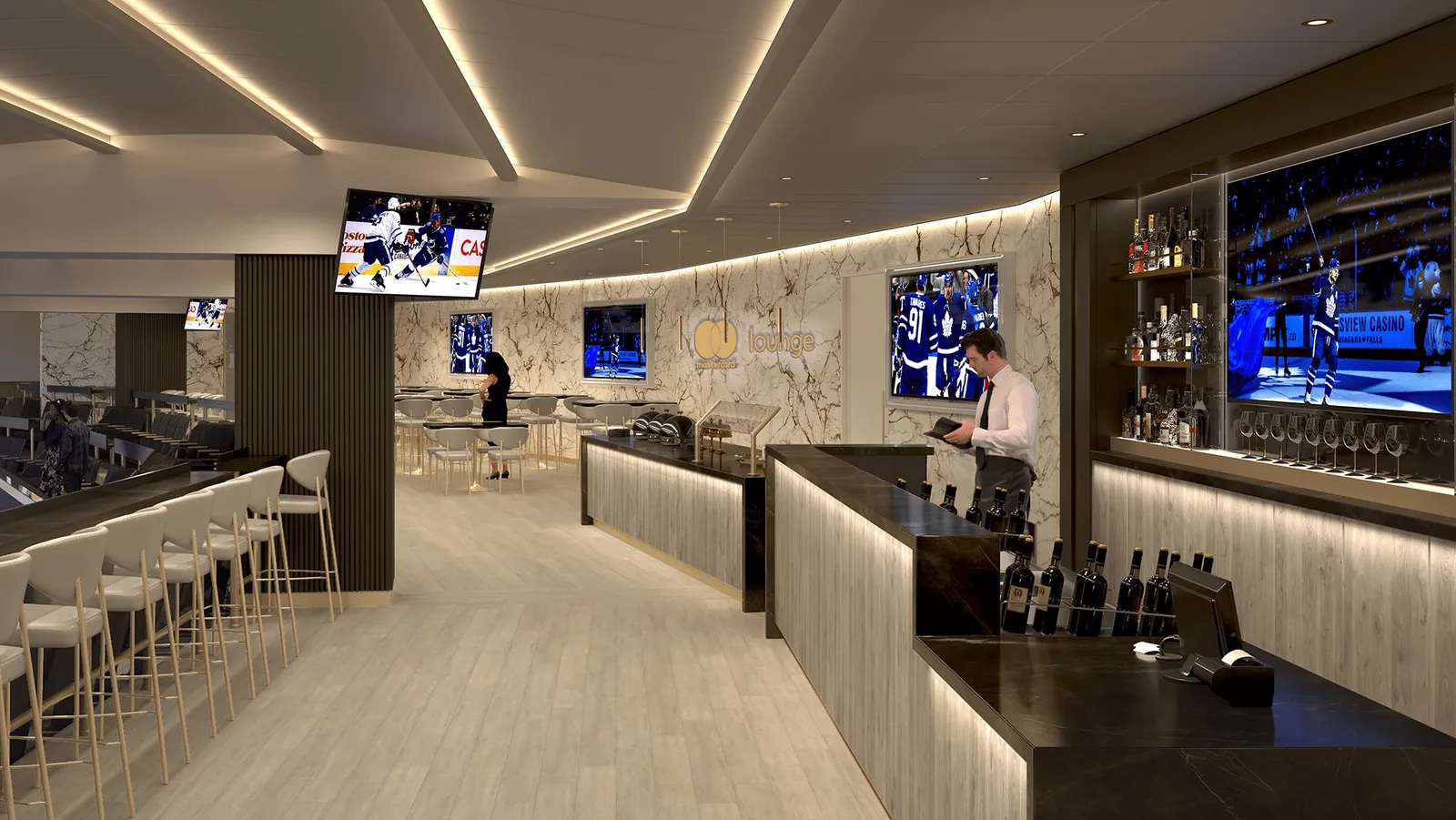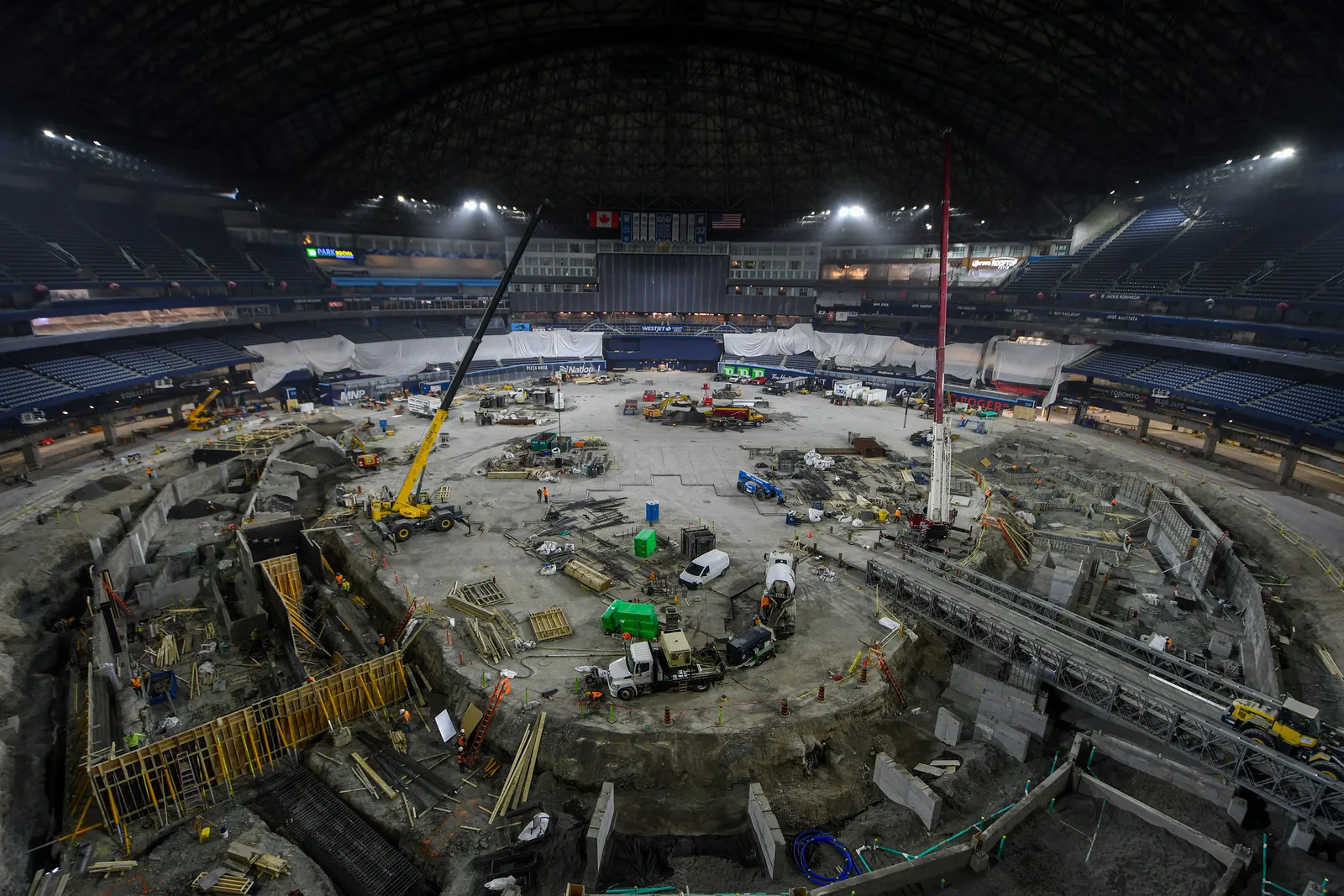During the construction of the San Diego Padres’ Petco Park, Gary Birdsall said his project team at the time found itself in a “peculiar situation,” when a historic building stood in the path of the planned outfield foul pole.
“It wasn't feasible to tear down this multi-story structure, so we needed an innovative solution,” said Birdsall, who worked at Bethesda, Maryland-based Clark Construction at the time of the project, which opened in 2001.
The result was a creative solution that required approval from Major League Baseball: A ball hit on one side of the Western Metals Building would be ruled fair, and the other side foul.
“This experience highlighted the importance of flexibility and out-of-the-box thinking in stadium construction, proving that even obstacles can be transformed into distinctive assets,” said Birdsall, now in the Denver area as the vice president of PCL Construction’s preconstruction sports division.

The contractor has constructed several high-profile North American stadium projects. PCL’s current projects include modernizing and upgrading several of them, including:
- The $350 million Scotiabank Arena renovation project for the NHL’s Toronto Maple Leafs and NBA’s Toronto Raptors.
- The $300 million Rogers Centre renovation project for the MLB’s Toronto Blue Jays.
- The renovation of Crypto.com Arena, formerly the Staples Center, in Los Angeles.
As with working on a historic building, these renovations require creative solutions to complicated problems. At the same time, the fan experience at stadiums has evolved, and so too have the renovation projects designed to upgrade the technology at North America’s biggest venues.
Tight timelines
When upgrading an existing stadium, PCL and other contractors have short windows of time during offseasons, which often means stretching out the project over multiple phases and years.

Even then, the timelines can grow and shrink depending on if teams make the playoffs or if the arenas host events like concerts in the offseason.
“On stadium renovation projects, much of our work is scheduled during the offseason, however it inevitably extends into the season with necessary prep and cleanup,” said Dale Koger, vice president of PCL’s sports division, also based in the Denver area.
As a result, Koger said, PCL teams find themselves working within occupied facilities behind the scenes, while meticulously trying to not disrupt the buildings’ schedule.
Eric Hernandez, a superintendent for PCL’s California buildings division, said he’s seen those challenges on Crypto.com Arena’s renovation. The final set of upgrades to the venue, first opened in 1999, will include renovations to the main concourse and tunnel club as well as redesigned locker rooms for home teams.

“This [schedule] uncertainty makes planning difficult for the trades involved, requiring them to work overtime, including six-day weeks and night shifts, to meet the deadlines,” Hernandez said. “The necessity for the construction teams to vacate and clean the site before each event, effectively erasing any trace of their presence, intensifies the time constraints.”
At the same time, Hernandez said he’s noticed a shift in stadium construction and design toward those shorter timelines and fluid initial designs.
“This requires our teams to be highly adaptable,” he said. “It appears this trend will continue, leading to even shorter schedules and a greater need for quick adaptation.”
Upgrading technology
In Birdsall’s view, the “fan experience has been revolutionized.”
The modern pro stadium experience isn’t just a ticket and a seat, PCL’s stadium builders said. It’s an immersive experience with high-resolution screens, massive score boards, increased luxury options, fast WiFi and improved concession experiences.
“Over the past few years, stadium construction and design have been profoundly transformed by technology,” said Koger. “One of the most significant shifts I've observed is the emphasis on 'futureproofing' — designing stadiums not just for today's tech but for tomorrow's possibilities.”
The futureproofing that Koger references will largely cater to the fan experience to enhance personalization and convenience, said Daniel Brown, senior project manager for PCL’s California buildings division.

“This shift toward more technologically sophisticated and fan-centric stadiums necessitates a seamless blend of design and construction efforts,” Brown said. “It's reinforced by a shared commitment to innovation and excellence, which is crucial in navigating the tight schedules and exceeding expectations we face today.”
And stadiums that populate iconic skylines factor into the often-cited pride for contractors pointing to the visible impact their work has.
“Stadium projects hold a special charm and prestige,” Hernandez said. “These projects create an opportunity for tradespeople to be part of something monumental. There's a deep sense of pride and legacy in contributing to such iconic projects, offering workers a chance to say, ‘I helped build that,’ and share a tangible piece of their legacy with their families.”






















